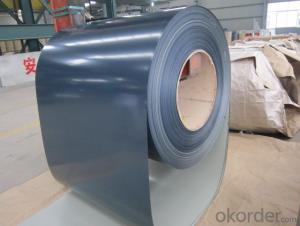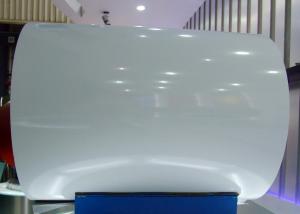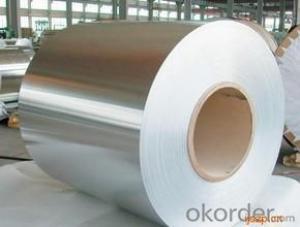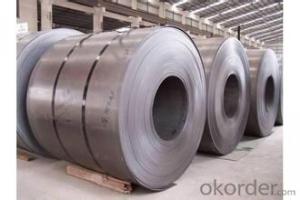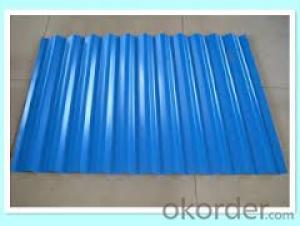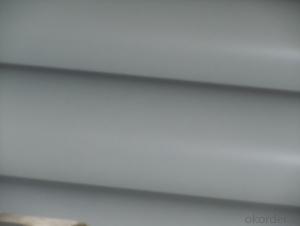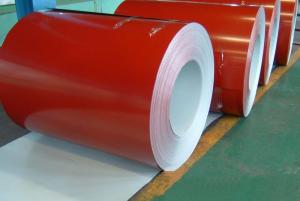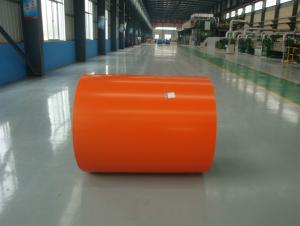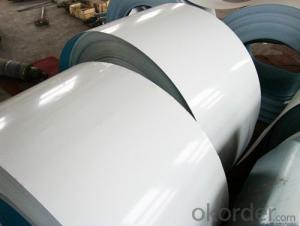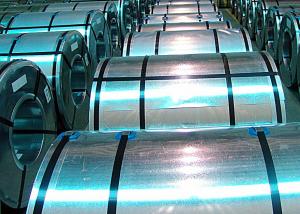PRE-PAINTED ALUZINC STEEL COILS
- Loading Port:
- China Main Port
- Payment Terms:
- TT OR LC
- Min Order Qty:
- -
- Supply Capability:
- -
OKorder Service Pledge
OKorder Financial Service
You Might Also Like
PRE-PAINTED ALUZINC STEEL COILS are produced by cold rolled GI steel which is coated with a layer of oil pait.After painted, the coils has beautiful appearance and more durable.
- Thickness range: 0.15mm - 1.50mm
- Width Range: 1250mm
- Colors: Any color as per RAL color
- CID: 508 or 610mm
- Base Steel: Cold rolled, Galvanized or Aluzinc
- Protective film: if required
ALUZINC COATING:80 g/m2 (+/-10g/m2)
TOP COATING:5 MIC EPOXY+15 MIC PE
BACK COATING: 5-7 MIC EPOXY
WEIGHT PER COIL:3-5 TONS COLOR:RAL9002
STANDARD:JIS G 3322 CGLCC
- Q: i have a question on a test and the questions before it are about blast furnace, wrought iron and cast iron...question 16 is..What is Steel?i dont really get what im being asked.. there could be many answers, what answer are they looking for?
- as steel is an alloy i thinkl they are looking for what elements it is made up of
- Q: What are the common methods of preserving steel coils?
- Some common methods of preserving steel coils include applying protective coatings, such as oil or paint, to prevent corrosion and rust formation. Another method is using VCI (Vapor Corrosion Inhibitor) paper or film, which releases chemicals that prevent oxidation. Additionally, steel coils can be stored in climate-controlled environments or wrapped in moisture-resistant materials to minimize exposure to moisture and humidity, which can accelerate corrosion.
- Q: How are steel coils loaded onto a truck?
- Steel coils are typically loaded onto a truck using specialized equipment such as cranes, forklifts, or coil trailers. The coils are lifted or rolled onto the truck bed, ensuring proper distribution of weight and secure fastening to prevent any movement during transportation.
- Q: Don't ask me why, but I took my stainless steel ring and I heated it up with my gas stove. I stuck it in there til the metal turned red, and the flame which is normally blue turned orange for some reason when the metal turned red. Anyway, afterwards i cooled it off in water and now it's all discolored and it feels different. It's weighs less and it doesn't feel the same. Plus, it's ugly cause it's all black and blue. What happened? Someone help
- My fiancé got a Tungsten wedding band. It's super tough and doesn't scratch. We made sure to get an extended warranty, because those rings can't be resized and otherwise we'd have to pay for a new one. We were thinking about titanium, but it's really light and he just didn't like the feel of it. The tungsten was heavy and felt durable and manly. He also loves the color, it's darker than silver so it looks non traditional. Make sure to get a ring with a curved band for comfort, or he may not like wearing it. Platinum actually scratches easily, so don't even think of it! My fiancé's wedding band was about $250, a bit more with the warranty. Stainless steel will be cheaper, but it's not as durable or scratch resistant as tungsten.
- Q: Is steel easier to weld?Which is more brittle/less flexible?
- Note: the easiest way to join steel to aluminum is to drill holes and BOLT them together...... You cannot WELD steel to aluminum.(except using extreme methods like explosion welding......) For all intents and purposes they are dissimilar metals, meaning they will not bond to each other. Also, aluminum has a much lower melting point than steel. It is possible to join steel and aluminum by *Soldering,* using tin/zinc hard solder. This requires a special flux designed exclusively for soldering aluminum though. The heating process is also a bit delicate as you must avoid overheating the joint. I work as a welder and I've only soldered Al three or four times. Steel is easiest to weld by far. If you set the equipment correctly, a six year-old kid can make a good weld on steel. Aluminum requires special equipment and procedures to weld. It's not easy. The brittleness of aluminum depends on it's alloy content. Most of the aluminum that's used today is not pure, rather it's in the form of aluminum ALLOYS which contain either zinc, magnesium, silicon, or manganese. these elements increase the strength dramatically, but also make it much less ductile. Commercially pure (CP) aluminum is very ductile, but it's also rather weak. Pure aluminum is used to make aluminum foil, as it's so soft and ductile it can easily be rolled paper-thin. The best aluminum alloys can come near in strength to mild steel, but weigh less than half as much as steel. Note that steel itself is an alloy of iron and carbon, Carbon increases the strength of iron in the same way that zinc or magnesium increase aluminum's strength. Most of the commonly used aluminum alloys are somewhat more brittle than mild steel, but not greatly so.
- Q: Can steel coils be reused?
- Yes, steel coils can be reused. They are often recycled and used in various industries such as automotive, construction, and manufacturing. The coils can be melted down and reshaped into new products, reducing the need for new raw materials and promoting sustainability.
- Q: What are the different methods of galvanizing steel coils?
- There are several methods of galvanizing steel coils, including hot-dip galvanizing, electro-galvanizing, and continuous galvanizing.
- Q: How are steel coils used in the manufacturing of exhaust manifolds?
- Steel coils are used in the manufacturing of exhaust manifolds as they provide the raw material for creating the manifold's structural components. These coils are typically cut, shaped, and welded to form the intricate and durable design required for efficient exhaust gas flow.
- Q: What are the quality standards for steel coil production?
- The quality standards for steel coil production typically include factors such as dimensional accuracy, surface finish, mechanical properties, chemical composition, and adherence to industry-specific standards and specifications. These standards ensure that the steel coils meet the required strength, durability, and performance criteria, and are suitable for various applications in industries like automotive, construction, and manufacturing.
- Q: ...particularly for jewelry?
- Steel Reserve (211) the beer...drink responsible...never drive when U had a few Oh I had my ring stolen at a bar It was stainless silver...PeAcE
Send your message to us
PRE-PAINTED ALUZINC STEEL COILS
- Loading Port:
- China Main Port
- Payment Terms:
- TT OR LC
- Min Order Qty:
- -
- Supply Capability:
- -
OKorder Service Pledge
OKorder Financial Service
Similar products
Hot products
Hot Searches
Related keywords
